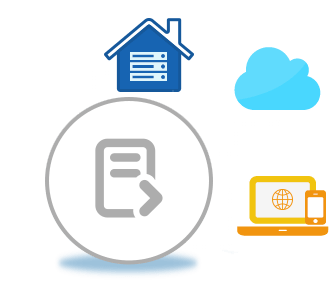Convert Word to PPT via Java or Online App
Word to PPT conversion by using on premise Java API within any Java J2SE, J2EE, J2ME applications without using Microsoft® PowerPoint or Word
Developers often need to convert Word files to PPT programmatically. Fortunately, this process can be automated with the help of the File Automation Java libraries Aspose.Total for Java . This library provides a simple and efficient way to render Word files into PPT presentations.
The first step is to load the Word file using Aspose.Words for Java . This library allows you to convert the Word file into HTML. Once the conversion is complete, you can use the powerful PowerPoint manipulation Java API Aspose.Slides for Java to create a new Presentation. This API allows you to write HTML content into the Presentation and save it as a PPT file.
The File Automation Java libraries Aspose.Total for Java provide a comprehensive solution for developers who need to convert Word files to PPT presentations. With the help of the powerful APIs, you can easily automate the rendering process and save time and effort.
How to Convert Word to PPT via Java
- Open Word file using Document class
- Convert Word file to HTML by using save method
- Initialize a new Presentation object
- Extract content from HTML file using BufferedReader and write the content in your presentation file
- Save the document to PPT using save method
Word to PPT Converter API
For Word to PPT file conversion, you can easily use Aspose.Total for Java directly from a Maven based project and include libraries in your pom.xml.
Alternatively, you can get a ZIP file from downloads .
Free Online Converter for Word to PPT
Convert Protected Word to PPT via Java
The API also allows you to convert password-protected Word documents to PPT. If your input Word document is password protected, you cannot convert it to PPT format without using the password. In order to open a encrypted document you can set the correct password in LoadOptions object and pass it to the Document constructor.
Convert Word to PPT with Watermark via Java
Using the API, you can also perform Word file to PPT conversion with watermark. In order to add a watermark to your PPT document, you can first export Word to HTML and write HTML content in Presentation object. After that to add a watermark, you can add text using addTextFrame, set all the relevant options like color, fillType and more and can save the document to PPT.
Key Use Cases
- Legacy PPT presentation creation from Word reports
- Corporate and enterprise briefing slides
- Academic research and teaching slides
- Government and organizational presentations
- Template-driven slide generation from structured Word content
Automation Scenarios
- Automated Word-to-PPT slide pipelines
- Batch conversion of Word reports into presentations
- Template-driven slide deck automation
- Enterprise-grade document-to-slide workflows
FAQ
- How can I convert Word to PPT Online?The above-integrated online app allows you to convert Word files to PPT. To get started, simply drag and drop or click inside the white area to import your Word file. Once your file is uploaded, click the "Convert" button. After the Word to PPT conversion process is complete, you can download your converted file with just one click.
- How long does it take to convert Word?This online Word converter works quickly, but its speed depends primarily on the size of the Word file you are converting. Smaller Word files can be converted to PPT in just a few seconds. If you have integrated the conversion code into your Java application, the speed of the conversion process will depend on how well you have optimized your application.
- Is it safe to convert Word to PPT using free Aspose.Total converter?Of course! After the conversion is complete, the download link for your PPT file will be available instantly. Your uploaded files will be deleted after 24 hours, and the download links will no longer work after that period. Your files are safe, and no one has access to them. The integrated app is mainly free for testing purposes, so you can verify the results before integrating the code.
- What browser should I use to convert Word?You can perform this online conversion using any modern browser such as Google Chrome, Firefox, Opera, or Safari. However, if you are building a desktop application, the Aspose.Total Word Conversion API offers a smooth experience.



